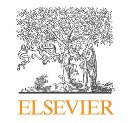Immunologic, reproductive, and carcinogenic risk assessment from POP exposure in East Greenland polar bears (Ursus maritimus) during 1983-2013
New publication by Rune Dietz, Jean-Pierre Desforges, Kim Gustavson, Frank F. Riget, Erik W. Born, Robert J. Letcher, and Christian Sonne

Abstract:
Polar bears (Ursus maritimus) are among the world's highest trophic level marine predators and as such have some of the highest tissue concentrations of organohalogen contaminants (OHCs) among Arctic biota. In this paper we present the results of a three decade (1983–2013) risk assessment of OHC exposure and effects on reproduction, immunity, and cancer (genotoxicity) in polar bears from Central East Greenland. Risk of adverse effects are evaluated using a risk quotient (RQ) approach with derivation from measured OHC concentrations in polar bear tissue and critical body residues (CBR) extrapolated for polar bears using physiologically-based pharmacokinetic modelling (PBPK). The additive RQs for all OHCs in polar bears were above the threshold for all effect categories (RQ > 1) in every year, suggesting this population has been at significant and continuous risk of contaminant-mediated effects for over three decades. RQs peaked in 1983 (RQ > 58) and again in 2013 (RQ > 50) after a period of decline. These trends follow ΣPCB levels during that time, and contributed almost all of the risk to immune, reproductive, and carcinogenic effects (71–99% of total RQ). The recent spike in RQs suggests a major shift in polar bear contaminant exposure from climate related changes in food composition and hereby the increased risk of adverse health effects. In the context of lifetime exposure ΣPCB and PFOS levels showed the interactive importance of year of birth, age, and emission history. In conclusion, the results indicate that East Greenland polar bears have been exposed to OHC levels over the period of 1983–2013 that potentially and continuously affected individual and theoretically also population health, with a peaking risk in the more recent years.
